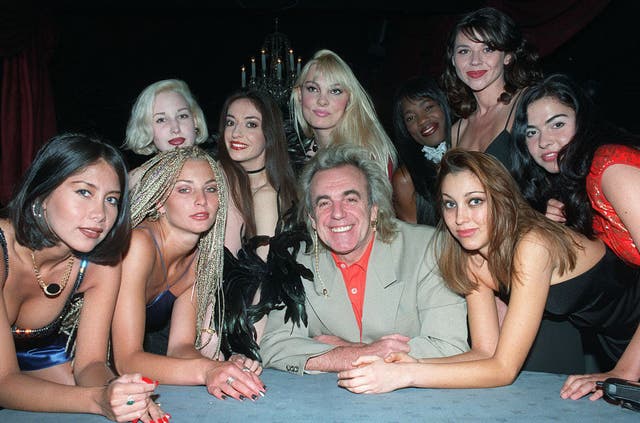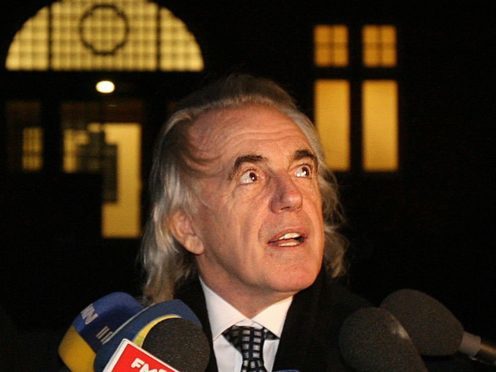Nightclub mogul Peter Stringfellow has died at the age of 77 after privately battling cancer.
The businessman, whose clubs attracted celebrities from around the world, died in the early hours of Thursday morning after spending time in hospital.
His publicist, Matt Glass, told the Press Association: “It’s very sad news. He passed away in the early hours of this morning. It was kept very private, he didn’t want to tell. He wanted to keep it a secret.”
The flamboyant nightclub boss was previously diagnosed with lung cancer in 2008 when he went for what he thought would be a prostate test with his private GP, but what turned out to be a fuller check.
He kept the news and treatment secret until it was leaked in 2015, and he later told the Daily Express “I just wanted to avoid all the sympathy”.
His publicist said that Stringfellow had been “battling” a different cancer for the past year.
His eponymous London club on Covent Garden’s Upper St Martins Lane will continue to operate “as normal”, he said.
The nightclub pioneer, whose youngest children are four and two, married three times.
So sorry to hear that Peter Stringfellow has died at the age of 77.He was a terrific guy who lived life to the full and was a wonderful person to be with.He was always full of fun and to me was a big part of he 60’s and 70’s .R.I.P. Peter x
— Tony Blackburn (@tonyblackburn) June 7, 2018
Talking about having children in his 70s, he told Good Morning Britain it made him the “happiest man in the world”, adding “I’m unique, I’m different”.
His death led to tributes from the likes of Lord Sugar, Boy George and radio presenter Tony Blackburn.
Stringfellow started in the nighttime trade in the early 1960s, and recalled booking acts including The Beatles, The Kinks and Jimi Hendrix to play at his clubs.
In 1980, he opened Stringfellows in Covent Garden in London’s West End and went on to create venues in Paris, New York, Miami, and Beverly Hills.
With its topless girls and exuberant after-hours entertainment, the Stringfellow brand became a byword for debauchery and sexual kicks that had echoes of the empire created by late Playboy magnate Hugh Hefner.
The mogul said his clubs had hosted A-listers including Prince, Marvin Gaye, Rod Stewart and Sir Tom Jones.
And it was not just celebrities who experienced Stringfellow’s hospitality – Professor Stephen Hawking once joined him for dinner at one of the venues.
RIP Peter Stringfellow , so many amazing memories I have with this man , from when I first came to UK and he took care of me for years in his club to staying with him and his family in Spain . Rest in peace friend, my thoughts r with ur family . No doubt a legacy will live on .
— Calum Best Official (@CalumBest) June 7, 2018
Born in Sheffield in 1940, Stringfellow was the eldest of four boys who were brought up by the women in his family after the men went to war.
He served a brief prison sentence in 1962 for selling stolen carpets, a sharp lesson which he said put him on the straight and narrow.
In a 2012 article for The Guardian, he attributed his entrepreneurial spirit to his “feisty” mother.

He said sex was never a topic of conversation in the house, while his father declined an invitation to visit one of his establishments in his later years.
TV appearances in recent years included Come Dine With Me, when his sink collapsed.
A grandfather four times over, Stringfellow is survived by his wife, Bella and four children, Karen, Scott, Rosabella and Angelo.
